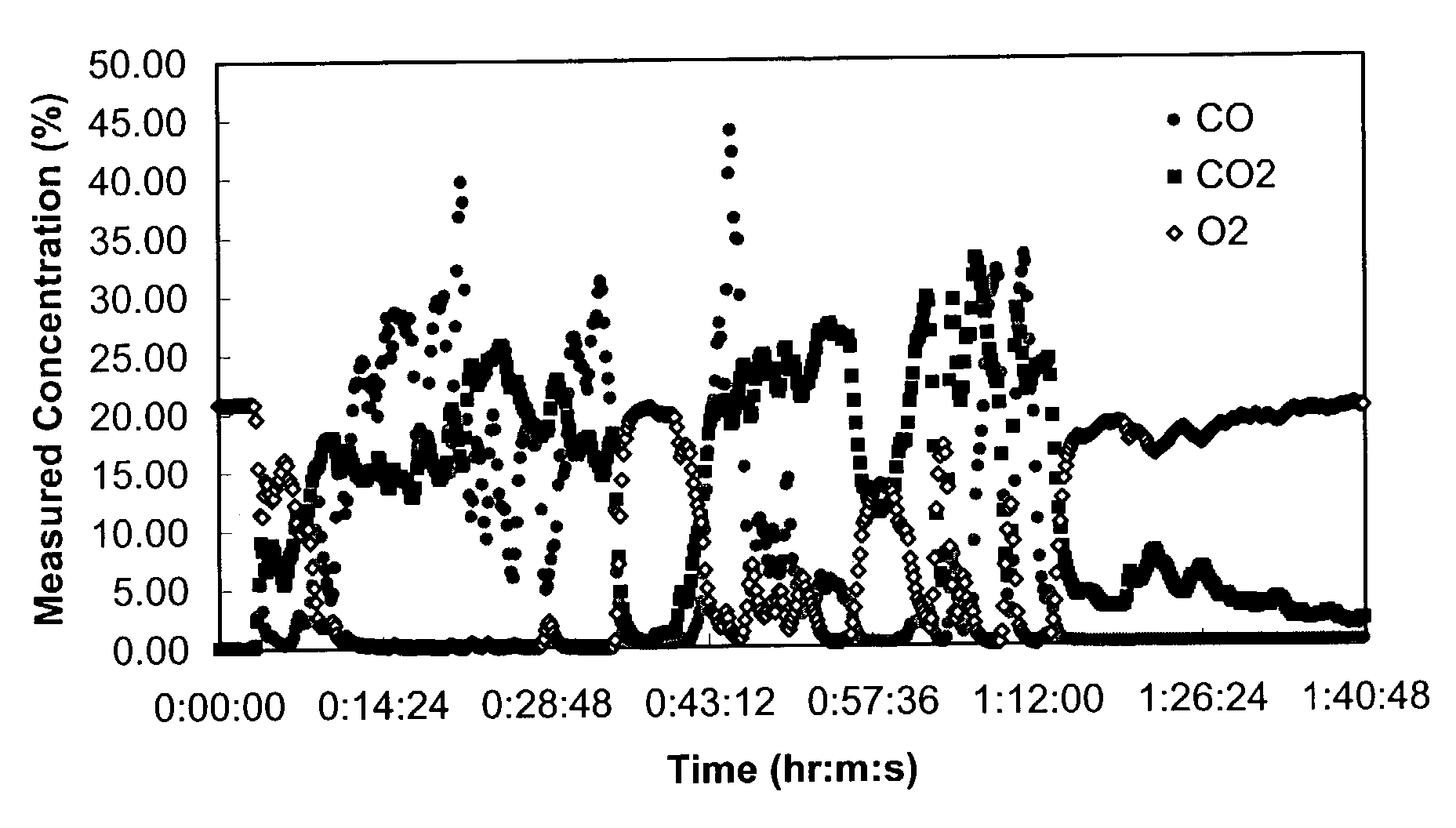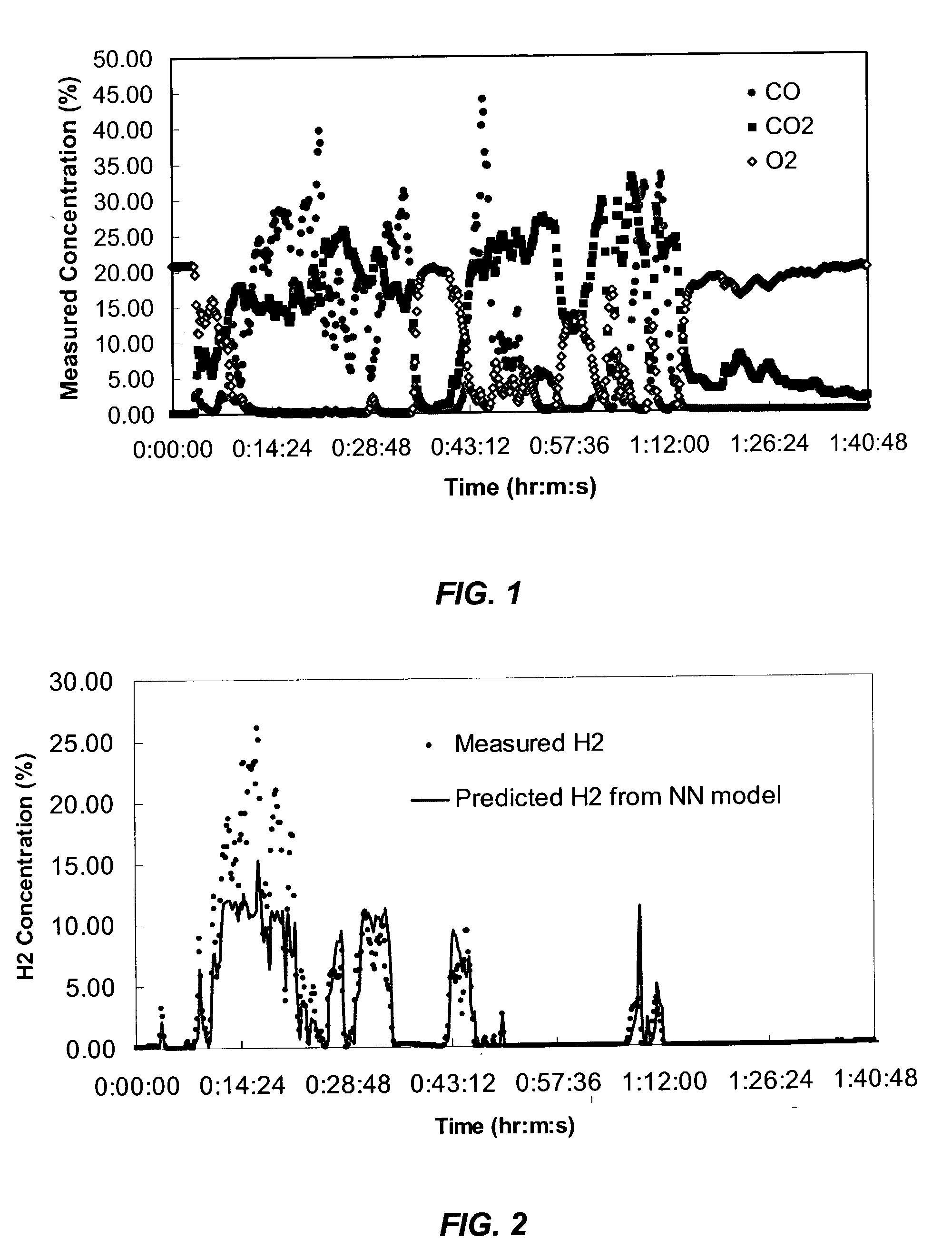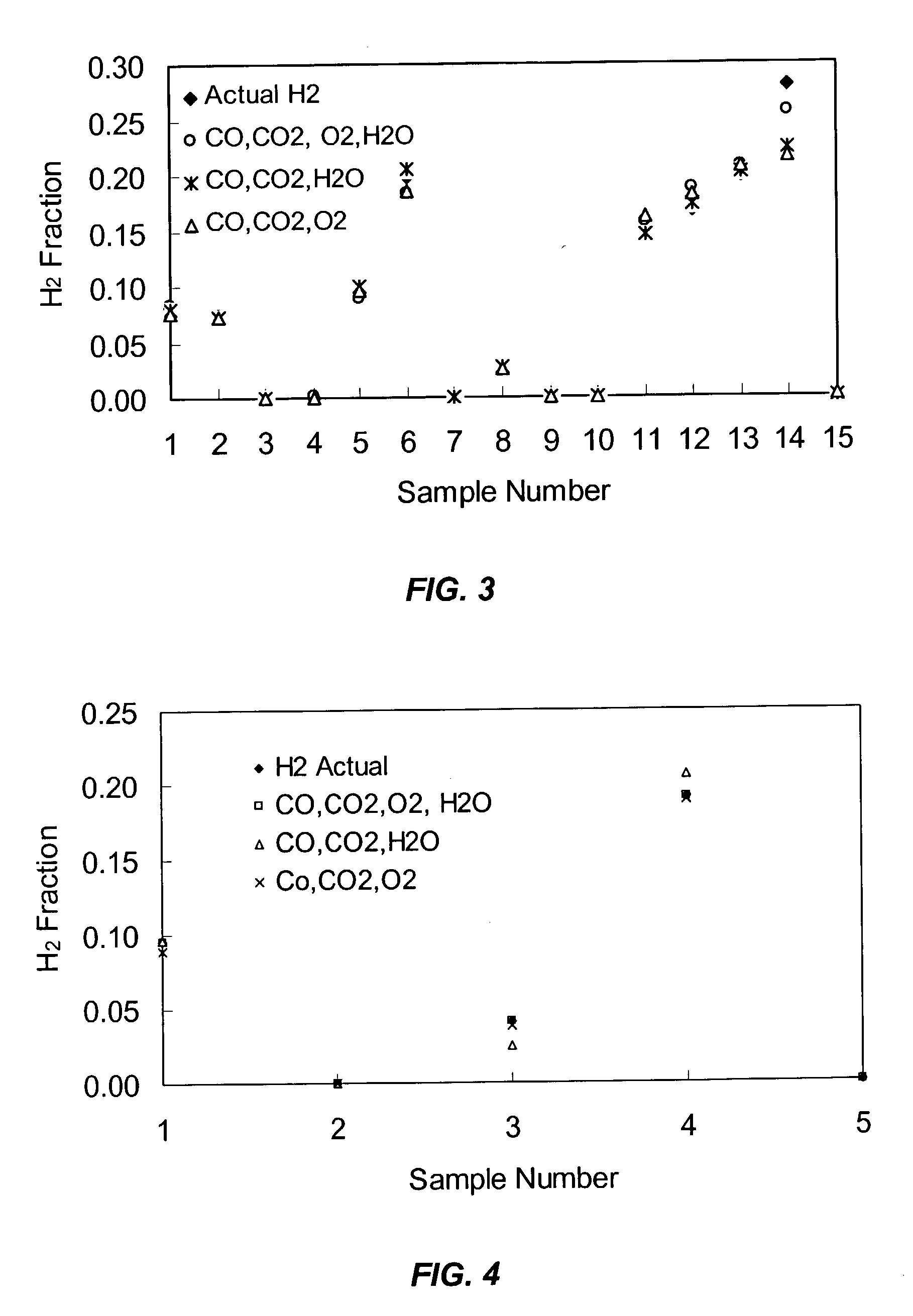Indirect gas species monitoring using tunable diode lasers
a diode laser and gas species technology, applied in the direction of instruments, manufacturing converters, furnaces, etc., can solve the problems of large loss of chemical energy, slow response time, complicated mass spectra interpretation,
- Summary
- Abstract
- Description
- Claims
- Application Information
AI Technical Summary
Benefits of technology
Problems solved by technology
Method used
Image
Examples
Embodiment Construction
[0035] For harsh combustion monitoring where particulate matter and / or a corrosive atmosphere are present, extractive sampling probes are not readily maintained. The preferred method is to use an in situ optical measurement that is not susceptible to issues related to particulate matter or the gas atmosphere because the measurement is non-intrusive. However, optical techniques are limited by the accessible wavelength range, putting a restriction on detection of certain species. For industrial applications, the system must be robust enough to survive the surrounding environment. Diode lasers satisfy this requirement since they are compact, solid-state devices that, in the near-IR, can be fiber optically coupled, which allows transporting the light to the process by fiber optics while the more sensitive electronics are placed in a controlled environment, e.g., a furnace operator control room.
[0036] Typically, H.sub.2 absorption measurements are not possible using near or mid-IR lasers...
PUM
| Property | Measurement | Unit |
|---|---|---|
| Weight | aaaaa | aaaaa |
| Ratio | aaaaa | aaaaa |
Abstract
Description
Claims
Application Information
 Login to View More
Login to View More - R&D
- Intellectual Property
- Life Sciences
- Materials
- Tech Scout
- Unparalleled Data Quality
- Higher Quality Content
- 60% Fewer Hallucinations
Browse by: Latest US Patents, China's latest patents, Technical Efficacy Thesaurus, Application Domain, Technology Topic, Popular Technical Reports.
© 2025 PatSnap. All rights reserved.Legal|Privacy policy|Modern Slavery Act Transparency Statement|Sitemap|About US| Contact US: help@patsnap.com



